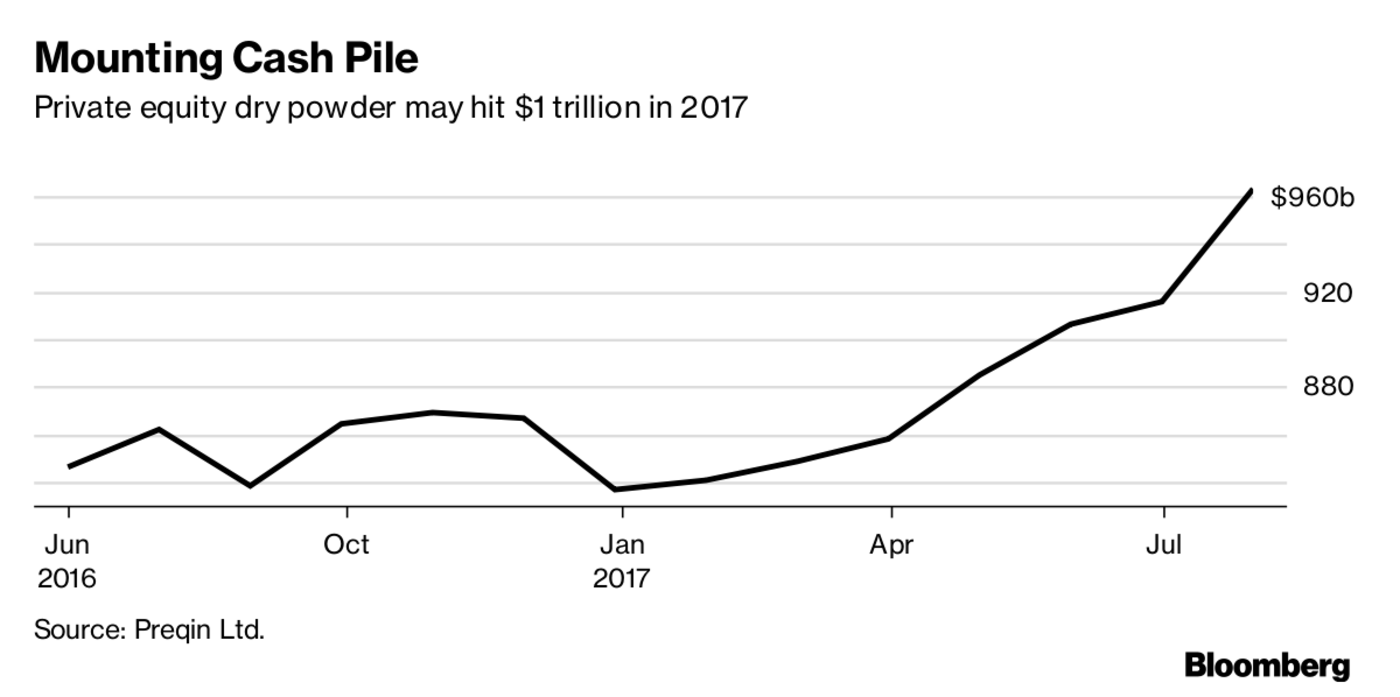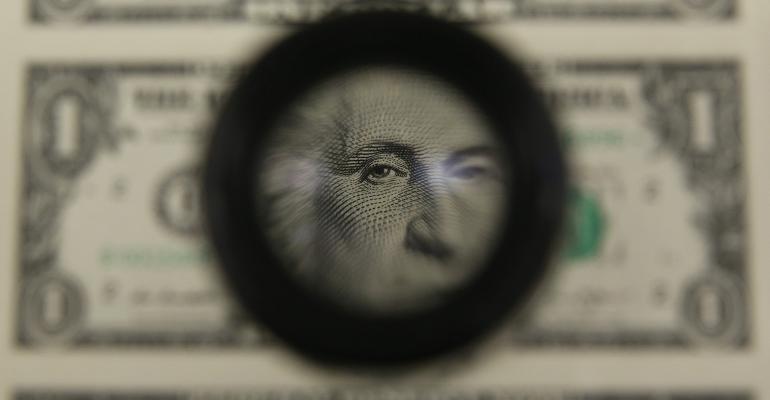By Sarah Jones
(Bloomberg) --With private equity firms sitting on a record amount of cash they’re struggling to invest, their clients are turning to exchange-traded funds for relief.
BlackRock Inc. and State Street Corp., two of the world’s biggest providers of ETFs, say an increasing number of institutional investors are using their products to park money earmarked for private funds. These investors -- pension plans, foundations and endowments that are under pressure to meet obligations -- are trying to eke out an extra return on cash that would otherwise languish in a money market fund.
“They can’t afford to have money sitting in cash or similar low-yielding investments,” said Armit Bhambra, who works for BlackRock’s iShares U.K. institutional team from London. “It’s difficult to justify sitting in cash for 24 months, so they’re having to think about different ways to fund these types of mandates.”
The amount of dry powder -- money raised but not yet invested -- could hit $1 trillion by the end of year in private equity alone, after reaching $963 billion in July, according to researcher Preqin Ltd. That’s pushing out the average time it takes for new commitments to start being invested to as long as three years, up from one year previously, according to State Street.

“The ability to deploy capital quickly has diminished,” said Chirag Patel, head of innovation and advisory for State Street in Europe. “Investors need liquidity to quickly fund potential capital calls, which is very unattractive in this environment, so the more often chosen route is to deploy against a capital-weighted index. They are buying index exposure.”
ETFs, which have grown to more than $4 trillion in assets, can give investors instant and diversified exposure to an asset class, while allowing for a quick liquidation to meet obligations. Unlike traditional money funds, they are exposed to the ups and downs of the underlying markets, and there’s some debate about how liquid ETFs really are when they track inherently illiquid assets such as junk bonds.
‘Clock’s Ticking’
The funds, which typically mirror the performance of an index and can be bought and sold throughout the day like a stock, have long been popular with retail investors because of their ease of use and low fees. Institutional investors have been slower to embrace them, with only about one in five U.S. institutions currently investing in them, but that number is quickly increasing, according to Greenwich Associates, a financial-services research firm.
BlackRock, which oversees almost $1.5 trillion in ETFs globally, has been pitching the products to institutions as simpler substitutes for single securities and derivatives used in the past to manage cash. It says its pension clients, at least in Europe, are increasingly using ETFs to create so-called liquidity sleeves for their portfolios.
“Until we find individual assets that we find attractive, we’ll buy the ETF,” said Leighton Shantz, the Austin-based director of fixed income at Employees Retirement System of Texas, which manages about $27 billion for state workers. “The clock’s ticking, you’re going to underperform because you’re going to pay the added management fee, but it at least gets you closer than if you’re sitting in cash.”
Record Fund
In the U.K, the Pensions and Lifetime Savings Association, which represents 1,300 members who oversee 1 trillion pounds ($1.3 trillion) in assets, says it’s getting an increasing number of calls from pension trustees asking how they can use ETFs for asset allocation and cash management.
Data on how much dry powder is “parked” in ETFs is hard to come by because the products are bought on the public markets. Eric Balchunas, an ETF analyst at Bloomberg Intelligence in New York, estimates that institutions globally, including endowments and sovereign wealth funds, have about 1 percent of their roughly $80 trillion of assets allocated to ETFs, so there’s room to grow. With more coming around to using ETFs, and dry powder building up in other asset classes as well, that number looks set to increase.
Carlyle Group LP’s David Rubenstein has said the fundraising market is now the best he’s ever seen, and Apollo Global Management LLC last month raised the biggest-ever buyout fund, with almost $25 billion committed. London-based Oakley Capital has amassed about 800 million euros ($938 million) for its third mid-market private equity fund, people familiar with the matter said this week, more than 50 percent higher than its last capital raise.
Until that cash is used for deals, private equity investors “are putting the money into equity markets, plain and simple,” said Wayne Bowers, Northern Trust Corp.’s Chief Executive Officer for Europe and Asia. “They’re making the money sweat.”
--With assistance from Rachel Evans.To contact the reporter on this story: Sarah Jones in London at [email protected] To contact the editors responsible for this story: Neil Callanan at [email protected] Christian Baumgaertel, Cindy Roberts





